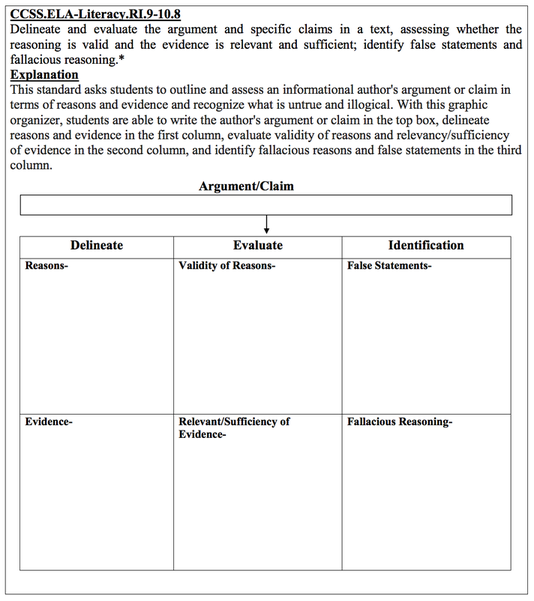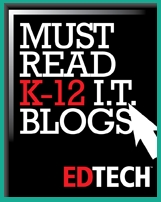
Finally, there aren't many comprehensive resources available for the middle and high school standards. The Visual Edge: Graphic Organizers for Standards Based Learning, Common Core 6-12 is designed based on the principle that visual learning is an effective, efficient way to tackle these challenges.
The Visual Edge is organized into five sections according to grade level:
- 6th grade
- 7th grade
- 8th grade
- 9th-10th grade
- 11th-12th grade
Grade level sections have a chapter on Common Core’s language modalities and disciplines:
- Reading Informational Text
- Reading Literature Text
- Writing
- Speaking/Listening
- Language
- History/Social Studies
- Science/Technical
Each chapter contains a visual instructional tool for each of the modality's and disciplines'
standards.
Every page has three sections. At the top is the standard(s) in full text. Next is an explanation
section that clarifies the standard and details how to use the visual instructional tool at the bottom
of the page to the teach and demonstrate the standard. Finally, the majority of each page features
the corresponding visual instructional tool representing that standard(s) (e.g., a graphic organizer
or example guide). Teachers can project the graphic organizer onto their boards to model the skill
and make copies of the graphic organizer for their students to follow. In addition, they can make
copies of the graphic organizer to have students work in partners, individually, or as part of
assessments.
Below is a shortened sample page of The Visual Edge for the CCSS.ELA-Literacy.RI.9-10.8
standard. The challenge with this (as with many other) Common Core Standard is managing so
many variables in the analysis/evaluation and having just days to teach and learn it. The graphic
organizer below helps to simplify by organizing all seven variables clearly and precisely.
Using a non-fiction text, where the author is making a claim and/or argument using reasons and
evidence, the graphic organizer allows teachers and students to outline and assess the persuasive
elements of the text (argument, reasons, evidence) and recognize the persuasive elements that
don't fit (false statements and fallacious reasoning). Teachers and students can separate all seven
text elements in the proper space provided to make sure the task is fully completed (see below).
For Common Core's reading skills (as mentioned above), teachers and students can read a text and
use the graphic organizer to account for all of the standard's variables. For the writing and
speaking skills, teachers and students can use the graphic organizer to brainstorm the standard's
variables, before the final draft, speech, or discussion. Certain language and writing standards
involve application so for those an example guide is provided so proper grammar or writing can
be modeled and applied.
The Visual Edge ensures a consistency of approach, enables visual learning, and provides the
ready-made instructional precision and clarity needed to master the quantity and rigor of Common
Core. The book is available in paperback on Amazon and Barnes N Noble, in Ebook on google,
or by contacting the author directly at [email protected].
About the Author:
Sargy Letuchy has taught ESL and Social Science throughout his teaching career in suburban Chicago. He holds a Bachelors of Education from Eastern Illinois University, a Masters in Educational Leadership from Midwestern State University, and a Masters in Curriculum and Instruction from National Louis University. He is passionate about curriculum engineering for standards based outcomes and helping both teachers and students achieve instructional results.













